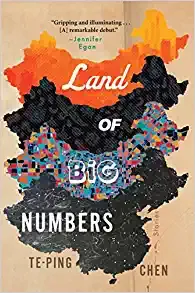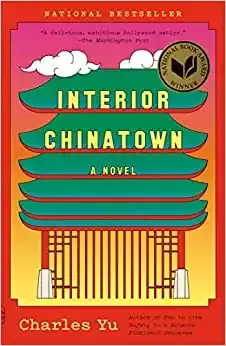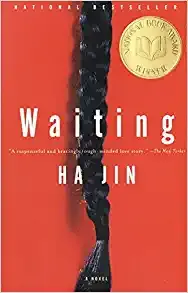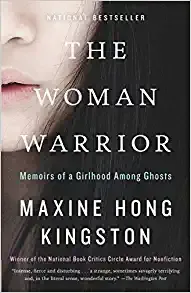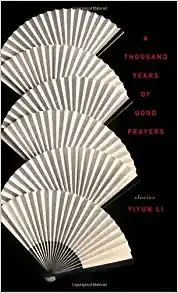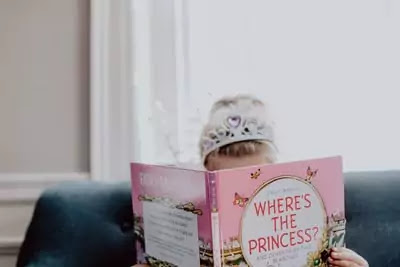1. Land of Big Numbers
Land of Big Numbers by Te-Ping Chen
After reading the first story, I was a little confused, because the story happened in China but it didn't look like real China. After reading two more stories, I confirmed that these stories are not realistic, but have strong sci-fi and dystopia. color.
The perspectives of the 10 stories are not exactly the same, and the author will not particularly deliberately address a certain social problem in China. He just brings some Chinese characteristics into the background of the stories, people's values, and thinking methods, which will not feel very contrived.
After reading it, I feel that the author is quite pertinent, not deliberately catering to the mainstream view of China in Western society, nor demonizing Chinese society. The writing is very good, and the expression is very sharp. Has the same tenderness as most female writers I've read and feels more rational and crisp. I like it.
2. On Earth We're Briefly Gorgeous
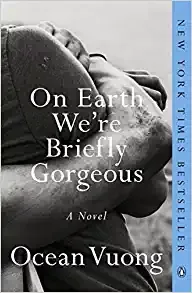
On Earth, We're Briefly Gorgeous by Ocean Vuong
This month is Asia Pacific Heritage Month, so I chose the autobiographical novel On Earth We're Briefly Gorgeous by Vietnamese writer Ocean Vuong. This is what the author wrote in the form of a letter to his mother. It's a coincidence that I read it on Mother's Day.
Beautifully written, but also painful. The author was born in Vietnam, which was in turmoil, moved to the Philippines, and finally fled to the United States. Raised by his grandmother and mother's single-parent family, he lives in a dilapidated small town in the United States, where his mother works hard at manicures, and his lovers and friends continue to die due to the recent opium crisis in the United States. And he got out of town by writing.
The painful memories of the war of grandmothers and mothers, the sentimental memories of the author's growing up without care and attention, the sweet and poignant memories of dealing with lost lovers, and the memories of flowers, butterflies, and calves in everyday life
The memories of, monkeys and water buffaloes made the author realize the shortness of life, Zhaohua's ephemeral nature, the pain that accompanies the shadows, and the continuation of love. It also made the author realize that we are so short-lived in this world. stay. But we stayed briefly, and we were brilliant, even for a moment.
After reading this book, I can't help feeling sad. Mothers on Mother's Day may be experiencing wars, or they may find it difficult to reunite with their children during the epidemic, or they may not be loved by their children and society. We are all mothers who have been brilliant and brilliant for a short time on the earth. May the world have less pain and suffering, and may mothers have fewer tears and more smiles.
3. Pachinko
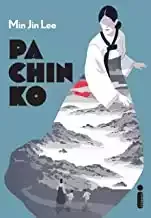
Pachinko by Min Jin Lee
1. "Pachinko" is the first work about Koreans in Japan written directly in English.
2. The timeline of Pachinko is from 1910 to 1989. The year 1989 was the year when the author, Lee Min-jin, first learned about the group of Koreans in Japan.
3. In 1989, the author first learned about the Korean community in Japan. In a missionary speech at the university, the missionary talked about the situation of many Koreans in Japan.
Among them, the author's most impressive story is the suicide of a 13-year-old boy. The boy was born in Japan, and his parents were born in Japan, but his classmates made him go back to his country (South Korea) and wrote "Go to hell" in his notebook that he smelled like garlic.
This story had a great influence on her and was also incorporated into "Pachinko", but the author's choice of perspective was not the boy who committed suicide or his parents, but to write the story from the perspective of the Japanese police (ie "Chunxi"). , is Mosa's good friend), to write the sympathetic of the Japanese to the Koreans in Japan.
The author has encountered many Japanese who have sympathy for Koreans in Japan, but the overall Japanese environment has not improved the situation that Koreans in Japan use negative words to describe Koreans. At the same time, Chunxi is gay, and homosexuality is not an easy path in Japan, so she did this.
4. The idea of writing stories for the Korean community in Japan has been circling in her mind since she learned about the existence of this group in 1989. The real creation started in 1996, and the original protagonist was actually Solomon.
5. Before "Pachinko", that is, in 2003, she had completed work with a Korean in Japan as the protagonist, but later she felt that it was not a novel, but too much like a paper, so she felt that it was not good work and gave up it.
6. The image of the protagonist Junko was established in 2007. In that year, the author returned to Asia and came to Japan. He met many Koreans in Japan, 아줌마 (old aunts), thinking about their work and life, and realized that without Sunja, there would be no Solomon.
7. The author interviewed many Koreans in Japan in Japan, and those people gave her inspiration to write the beginning of "Pachinko", that is, "History has failed us, but no matter." The translation of the Chinese version is "History has failed us, but we have nothing to fear".
In fact, this translation is different from the author's own interpretation. The author said in the interview that those in Japan and South Korea clearly stated that they were not victims of history, they knew that history happened and some laws were unfair, but their attitude was, you move on, you work through it, they did not go to binary opposition, did not feel that only one of Japan and South Korea is good, and the other is evil.
These Koreans in Japan made the author rethink the work and focus on people, not the winning or losing of history.
8. The author is a history major. She said that she likes doing research and reading documents very much. She has read a lot of documents for the writing of "Pachinko".
She said that readers do not need to know these very specific historical details, but she needs Know, learns, and forget specific details in writing.
For the shaping of the characters, the inspiration does not come from music or the like, but from interviews and materials.
9. The final "Pachinko" work was published in 2017. So this book took nearly 30 years from the original idea in 1989 to the research, creation, and final publication.
4. Klara and the Sun

Klara and the Sun by Kazuo Ishiguro
The first-person perspective of artificial intelligence is my favorite. It is written by Kazuo Ishiguro, who has delicate writing, rich narrative layers, and always has a spirit of exploration of human nature.
Why do you love artificial intelligence, because all artificial intelligence stories are ultimately about people, what defines people, and what is human nature, those AIs with extraordinary intelligence, and amazing insight, but childlike naivety seem to be another hypothesis of human nature, it's so interesting to see ourselves through them.
Also, I really love Kazuo Ishiguro. He only examines people without judgment. He is really humble and tender.
Originally, after reading this book, the first impression was two stars, but seeing the full screen with five stars makes people tremble... Is what I read and what you read the same book? In order to be true to my own feelings, this evaluation is still made. This book disappointed me very much.
Although I am not a big fan of Kazuo Ishiguro, I like him very much from his previous works and think his works are very special! However, this novel seems to be an extended version of a children's book.
The dialogue of the characters is the same tone regardless of age or gender... I can't understand the depth of the story beyond the enjoyment of reading...
The story is actually very simple: AF subjective feeling A story of subjective salvation. The superfluous branch trivializes the story. If this is a short story, it may be a surprise.
5. How Much of These Hills Is Gold
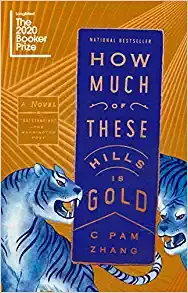
How Much of These Hills Is Gold by C Pam Zhang
I'm utterly disappointed by it, and how well-regarded this book is. First and foremost, as a trilingual reader (English, Mandarin, and Cantonese), the lethal weakness that bugs me throughout the book and makes me hate it so much is the misuse of languages.
English speakers might not be able to pick it up, but I'm unsettled by Zhang's decision to replace Toisanese and Cantonese with Mandarin pin yin, just bc may be of her own background.
Furthermore, the erasure of Native Americans through the sinicization of Indigenous people on this land is unbearable. Zhang's genre revision is basically a Sino-centric reimagination of the gold rush that really is proposing how European settler colonialism shall be revised into a “better” Chinese settler colonialism.
There's not much grappling with the intricacies of many POC as both victims and beneficiaries of settler colonialism.
And I cannot help but question why Zhang, an elite ivy league one-point-five-generation Mandarin-speaking Chinese American, is trying to tell this story of the gold rush.
It's neither a sincere family story nor a historical fiction that respects the experiences of the early Chinese diaspora and their descendants.
There is a lot of potential with a Western revisionist novel that pays due respect to the histories of White settlers, POC settler laborers, and Indigenous people. But sadly, Zhang's book is far from being it.
6. The Joy Luck Club

The Joy Luck Club by Amy Tan
This is what the book "The Joy Luck Club" gave me the most. The author wandered freely in time as if possessed by a soul, constantly looking at the world through the eyes of a mother or a daughter at different times.
Use the tone of their day to tell their feelings and views about the world. Everyone, whether it's our parents, grandparents, or our children, originally lives in their own unique world, and even our closest relatives, we can only experience what we see and hear.
A little bit. We fail to understand others because we are so loaded up with our own experiences that it is hard to imagine what the other person is going through and how those experiences will affect his or her way of seeing the world.
Just like a mother tells her stories in Chinese, and even if a daughter who grew up in the United States can understand Chinese, those stories will only blow like the wind, leaving no trace.
But in fact, the mother also has a childhood, and the daughter also has a day when she grows up. And childhood experiences, and even the childhood experiences of our parents, can have an impact on our lives now.
This is the wonderful cycle of life. We are only one link in this cycle, and everything continues to cycle. When the wind blows, it has left its mark on us, whether we can feel it or not.
7. Minor Feelings: An Asian American Reckoning
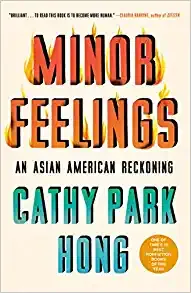
Minor Feelings: An Asian American Reckoning by Cathy Park Hong
On the inside of the cover of the book is a passage that says:
Poet and essayist Cathy Park Hong fearlessly and provocatively blend memoir, cultural consciousness, and history to expose fresh truths about racialized in America.
I don't think this book is about "fresh truths", I think this book is about "uncovering the truths", these truths in the book, these honest feelings, are always there, just not paid attention, not told, No one speaks from Cathy's perspective.
For example, why do people pay attention to the work of artist Theresa Hak Kyung Cha, but every time she mentions the cause of her death by rape and murder, it is taken lightly? Why did her rape case become taboo? Why did Carmen Winant 2018 do a photo installation about female childbirth at MOMA, all the pictures were of white women?
Why does "Blade Runner 2046" have India, Japan, etc. elements in the scene, but why are the main characters not Asian? Why didn't the documentary "Vietnam War" interview some South Korean soldiers who were assisting the US military at that time? ...
I've watched "Blade Runner 2046" and I've also watched "The Vietnam War", but because of our different identities, the world that Cathy and I see are at odds, and I can't see this layer of her so-called "whiteness", There is no Asian American lens.
In Jose Saramago's novel Blindness, when the characters go blind, their vision doesn't go dark but turns white as if they “plunged with open eyes into the milky sea.” I see whiteness everywhere I go. I sense its machinations. I see that even my mind is stained by whiteness as if it's been dyed with the radiopaque ink used for X-rays. This stain makes me incessantly analogize my life to other lives. I no longer think my life comes up short. But even in opposition, I still see my life in relation to whiteness.
I suddenly seem to be able to understand why the Japanese hostess who interviewed Simu Liu at the premiere of "Shang-Chi and the Legend of the Ten Rings" was about to faint with excitement;
I also seem to be able to understand why there are Chinese-Americans who grew up in the United States I will think that an actor who looks ordinary but can express himself clearly in both Chinese and English is very good.
Asian American is a term that has always puzzled me a lot. I think it's too big and inappropriate, and it lumps all Asians together indiscriminately. Take China and India as an example.
In addition to being countries with large populations, their languages, cultures, and customs are far from each other. However, in the United States, they are all Asian Americans.
To me, Asian is more of a spatial term. It's like, we are all students in Year 1, Class 1, but you can't represent me, and I can't represent you, we are individuals. But because of this book, I suddenly understand Asian Americans a little more.
Cathy's language is a bit spicy, and suddenly there will be particularly poetic words and phrases, which catch people off guard.
8. Little Fires Everywhere

Little Fires Everywhere by Celeste Ng
The story of "Little Little Fire" tells the story of a small fire that burned down the Richardson family's house in the summer of a certain year.
Everyone thought it was a "good thing" that his youngest daughter Ikki did, but she disappeared... Along with Ikki, there were also the tenants of Richardson's house: the wandering artist Mia and her daughter Pearl.
The novel unfolds to us in flashbacks: the Richardsons live a secure, peaceful life in a large luxury house called Sickel Heights, where they live in Sickel Highland is a planned city, and there are many rules in this city, including what you can do and what you can't do, "planned is the best" is the motto of this city, the people who live here People also believe in this creed: to live happily day after day and year after year in this city according to the rules.
Similarly, in his own life, he lives according to the established rules of life, such as studying hard, working hard, getting married, having children, and raising children.
The Richardson family is no exception and lives happily according to such rules. There are four children in his family: the eldest daughter Lexie, the confident and outgoing eldest daughter, the handsome second son Tripp from England, and the third son Moody, who is somewhat introverted from Myanmar. , and the little daughter Ikki, who is a little "extraordinary".
And as new tenants, homeless artist Mia and her daughter Pearl, moved to Seakel Heights to rent a rental house in the Richardsons, everyone in the Richardsons began to change.
The biggest difference between Mia and the Richardson family is that from the very beginning, Mia only followed her own heart, never succumbed to the pressure of the world, lived the life she wanted, and did not measure a person with worldly eyes.
And that's where Mrs. Richardson is completely different. The appearance of Mia was initially a curiosity to Mrs. Richardson, but with the changes that Mia brought to the four children of the Richardson family, especially the change of the youngest daughter Ikki, who was called "Alien", Mrs. Richardson was terrified,
because Mia's lifestyle was different from that of the Richardsons, and even the way people did things according to the rules of the whole of Seakel Heights, which made Mrs. Richardson feel at a loss.
"Little Little Fire" ostensibly describes the lifestyle conflict between the Richardson family and the new tenant Mia, but it actually explores the differences in life pursuits and lifestyles brought about by different values.
At the same time, how to face it, whether to embrace integration or resist rejection, are all things that we should think about after reading the novel "Little Little Fire".
9. Crazy Rich Asians

Crazy Rich Asians by Kevin Kwan
I finally finished reading this book in the early morning, and it's interesting to read it for leisure.
The main line is the inspirational story of a 30-year-old female doctor born on the mainland and a 32-year-old super handsome and super charismatic male doctor who came from more than three generations of aristocratic families.
There are too many characters in it, so the portrayal of the male and female protagonists is slightly weak, but more emphasis is placed on describing their brands, prices, and lifestyles.
I have made a detailed description of the luxurious and extravagant lifestyle of the Chinese in Singapore and Hong Kong, which can be used as a guide for the lifestyle of the rich and rich in mainland China.
I was shocked that the book also mentioned family planning on the mainland, as well as trying to get a boy.
Blind as the first-born baby girl echoes the news that a few days ago, a needle was used to stab the baby girl's body to ask for a baby boy.
Written like a script, perfect for a movie adaptation! According to The Wall Street Journal, it is being adapted into a movie.
10. The Paper Menagerie and Other Stories

The Paper Menagerie and Other Stories by Ken Liu
The first time I read the award-winning "Paper Menagerie" was a reading comprehension I did when preparing for the SAT in high school. The excerpts and test questions mainly explored the identity and contradictions of second-generation immigrants in the United States.
In the third year of coming to the United States, I reread the complete version, and then I felt that Ken Liu wrote a fragment of his rejection of his mother.
Every word struck my heart, into the hearts of every international student, into every attempt to integrate into American society.
For those who have abandoned or doubted the original culture, Ken Liu's words are cold and cruel, like a needle pierced into the flesh, and the pain is so painful that people can't breathe.
Thank you Ken Liu for making me understand what native culture means to a person. It is the cornerstone, the backing, and it is written in the DNA sequence of every Chinese.
It makes us different from Americans in our bones, but the difference does not represent the difference, the difference makes us unique, and we should be proud of it.
"If I say 'love,' I feel here." She pointed to her lips. "If I say 'ai,' I feel here." She put her hand over her heart. --- "Paper Menagerie"
11. Crying in H Mart: A Memoir

Crying in H Mart: A Memoir by Michelle Zauner
This book tells the story of the author Michelle Zauner before and after her mother's illness and death.
This is a Memoir written by the author Michelle after her mother died of cancer. It is about her memories of growing up with her mother, the care Michelle took for her from the time of her mother's illness to the six months before her death, and the memories of her mother after her death. sad.
Michelle called the process of writing the book a kind of therapy, healing her from the loss of her mother. After the book was published, the fire also brought fire to Michelle's band Japanese Breakfast (the song is very good!), I really believe that this is the good luck brought to her by her mother.
Michelle is half-American and Korean, with a Korean mother and a white American father. They live in Eugene, Oregon, USA, so Michelle's identity as a mixed Asian is another theme of the book.
Why is the title of the book Crying in H Mart? H Mart is a Korean grocery store chain in the United States. The most important connection between Michelle and her mother is the mutual love of Korean food.
When Michelle went to H mart alone after her mother's death, she remembered the memories of visiting this supermarket with her mother, seeing three generations of Korean families eating together in the food court inside, and was saddened by her mother's early death and subsequent loss. the only link between himself and his Korean identity.
12. Norwegian Wood

Norwegian Wood by Haruki Murakami
The only Haruki Murakami novel I have read so far is this "Norwegian Forest", but the owner of the house I live in is a Murakami fan, and the only books on the shelf are Haruki Haruki novels.
This stunning and elegiac novel by the author of the internationally acclaimed Wind-Up Bird Chronicle has sold over 4 million copies in Japan and is now available to American audiences for the first time. It is sure to be a literary event.
Toru, a quiet and preternaturally serious young college student in Tokyo, is devoted to Naoko, a beautiful and introspective young woman, but their mutual passion is marked by the tragic death of their best friend years before.
Toru begins to adapt to campus life and the loneliness and isolation he faces there, but Naoko finds the pressures and responsibilities of life unbearable.
As she retreats further into her own world, Toru finds herself reaching out to others and drawn to a fiercely independent and sexually liberated young woman.
A poignant story of one college student's romantic coming-of-age, Norwegian Wood takes us to that distant place of a young man's first, hopeless, and heroic love.
13. Whereabouts

Whereabouts by Jhumpa Lahiri
Jhumpa Lahiri is a gifted writer, her prose is always like water, intertwined with calm flows and sudden waves; reading her is like sitting in a boat and being amazed at what the water brings.
I loved her short story collection “the interpreter of Maladies”. Her later books are also good, establishing herself as a distinct literary voice- a second-generation Indian immigrant who grew up in Rhode Island and had shrewd observation of our contemporary life- immigrant or not.
Currently, she is a Professor of creative writing at Princeton and has been taking a sabbatical in Italy. This is the book she wrote in Italian and translated back into English herself.
Whereabouts, a place where someone is. This book is short, made of snippets and vignettes of a woman's seemingly mundane everyday life.
As time goes by, one will realize the disappearance of the constant excitement, the anticipation, and the unstoppable urge to keep moving forward associated with youth.
Because one has seen a lot, done a lot, and felt a lot, the excitement may subside, and one gets lost in knowing one's own whereabouts.
Is this where I am supposed to be? Where do I want to be? How did I get here? What now? What after?
We read about a woman, single, in her 40s, who probably works in a university, probably a writer/artist who lives in a city in Italy.
We follow her daily routines, read her thoughts, and get familiar with a few people in her life, her mother, the man on the bridge who she keeps bumping into, who is her friend's husband.
We start to know her and see the “whereabouts” in her life, rather than a specific geographic location.
The prose is dreamy and deliberately slow at times, and then all of sudden, she throws some sentences at you, so deep and fierce, and takes you by surprise. “Solitude: it's become my trade.
As it requires a certain discipline, it's a condition I try to perfect. And yet it plagues me, it weighs on me in spite of my knowing it so well.”
We all have times in our lives when we start to wonder about our own whereabouts, we will also stop and reflect as she did; hope we can be like her, and keep moving forward.
14. A Burning

A Burning by Megha Majumdar
I really like the author's bland tone about life in the slums as a woman's plight as a scapegoat The repressed anger and feeling of powerlessness is the most touching thing about the inmates in the prison who have been bullied by men in their lives somehow go to prison, What's more, the three-person perspective of women has a very good impact on society and life!
But I always felt that PT Sir becoming a politician was a later addition because his storyline was very boring in the middle. Jivan's toughness and intelligence (but unable to resist this society) made me think of Rue and Lovely happened to be the image of Jules The story that comes to my mind (actually Lovely is not that beautiful but at least figurative) can imagine the story
after that people found Jivan's letter, maybe she was cleared of her grievance, maybe there was a bill but nothing changed The fact that she has died unjustly, her family is very poor, maybe not the poorest kind, but her father's injury is enough to make the family collapse. Isn't this the most worthy of reflection in this society?
15. If I Had Your Face

If I Had Your Face by Frances Cha
It's a good read, but the author wants to cover too many things: female friendship, appearance anxiety, sexism, class, star chasing, and parenting... But the characters are handled thinly and flatly, and it always reads like a Korean drama. Visual sense.
It is actually aimed at the beauties on the title and cover of the book (the lustful stone hammer), and it is written about renting and living in the same building and doing different professions (artist, nightclub senior escort, company employee, hairdresser, The stories of girls who want to become senior escorts), the stories of girls helping girls, also touched on countless hot topics in the patriarchal society (plastic surgery, star chasing, maternity leave, wealth gap, etc.).
There is no way out and no hope in the lives of girls, idols and chaebol boyfriends are bound to disappoint them, but they have each other, and in the end, they can always go out on their own. (The funniest thing is that the best excuse to stop a gentlemanly boyfriend from helping him get a bag he forgot in the car is that the sanitary napkin in the bag fell out)


